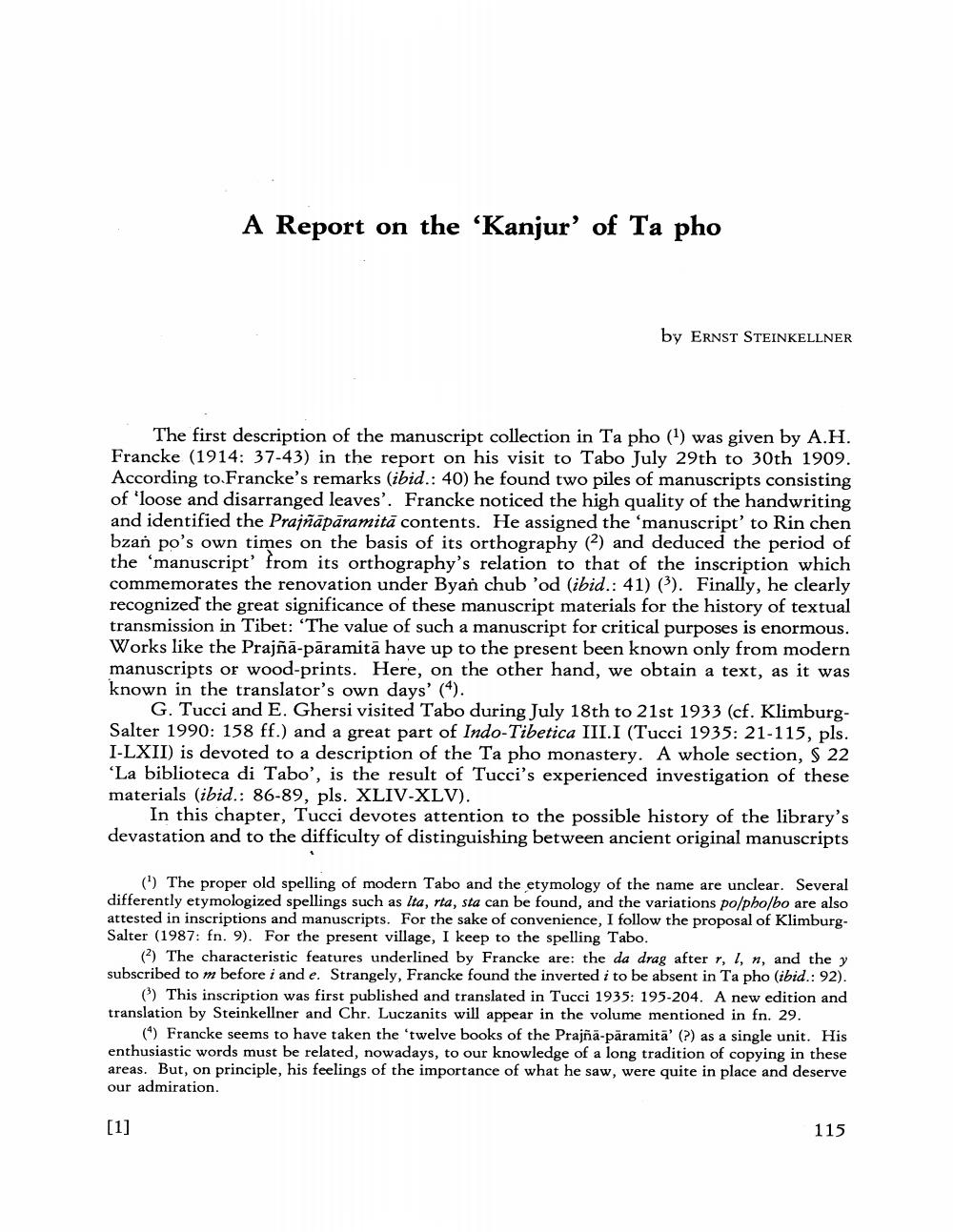Book Title: Report On Kanjur Of Ta Pho Author(s): Ernst Steinkellner Publisher: Ernst Steinkellner View full book textPage 1
________________ A Report on the ‘Kanjur' of Ta pho by ERNST STEINKELLNER The first description of the manuscript collection in Ta pho (1) was given by A.H. Francke (1914: 37-43) in the report on his visit to Tabo July 29th to 30th 1909. According to Francke's remarks (ibid.: 40) he found two piles of manuscripts consisting of 'loose and disarranged leaves'. Francke noticed the high quality of the handwriting and identified the Prajñāpāramitā contents. He assigned the 'manuscript' to Rin chen bzan po's own times on the basis of its orthography (2) and deduced the period of the 'manuscript' from its orthography's relation to that of the inscription which commemorates the renovation under Byan chub 'od (ibid.: 41) (3). Finally, he clearly recognized the great significance of these manuscript materials for the history of textual transmission in Tibet: 'The value of such a manuscript for critical purposes is enormous. Works like the Prajñā-pāramitā have up to the present been known only from modern manuscripts or wood-prints. Here, on the other hand, we obtain a text, as it was known in the translator's own days' (“). G. Tucci and E. Ghersi visited Tabo during July 18th to 21st 1933 (cf. KlimburgSalter 1990: 158 ff.) and a great part of Indo-Tibetica III.I (Tucci 1935: 21-115, pls. I-LXII) is devoted to a description of the Ta pho monastery. A whole section, S 22 'La biblioteca di Tabo', is the result of Tucci's experienced investigation of these materials (ibid.: 86-89, pls. XLIV-XLV). In this chapter, Tucci devotes attention to the possible history of the library's devastation and to the difficulty of distinguishing between ancient original manuscripts (1) The proper old spelling of modern Tabo and the etymology of the name are unclear. Several differently etymologized spellings such as lta, rta, sta can be found, and the variations po/pholbo are also attested in inscriptions and manuscripts. For the sake of convenience, I follow the proposal of KlimburgSalter (1987: fn. 9). For the present village, I keep to the spelling Tabo. (2) The characteristic features underlined by Francke are: the da drag after r, I, n, and they subscribed to m before i and e. Strangely, Francke found the inverted i to be absent in Ta pho (ibid.: 92). () This inscription was first published and translated in Tucci 1935: 195-204. A new edition and translation by Steinkellner and Chr. Luczanits will appear in the volume mentioned in fn. 29. (4) Francke seems to have taken the 'twelve books of the Prajna-paramita' (?) as a single unit. His enthusiastic words must be related, nowadays, to our knowledge of a long tradition of copying in these areas. But, on principle, his feelings of the importance of what he saw, were quite in place and deserve our admiration [1] 115Page Navigation
1 2 3 4 5 6 7 8 9 10 11 12 ... 22
